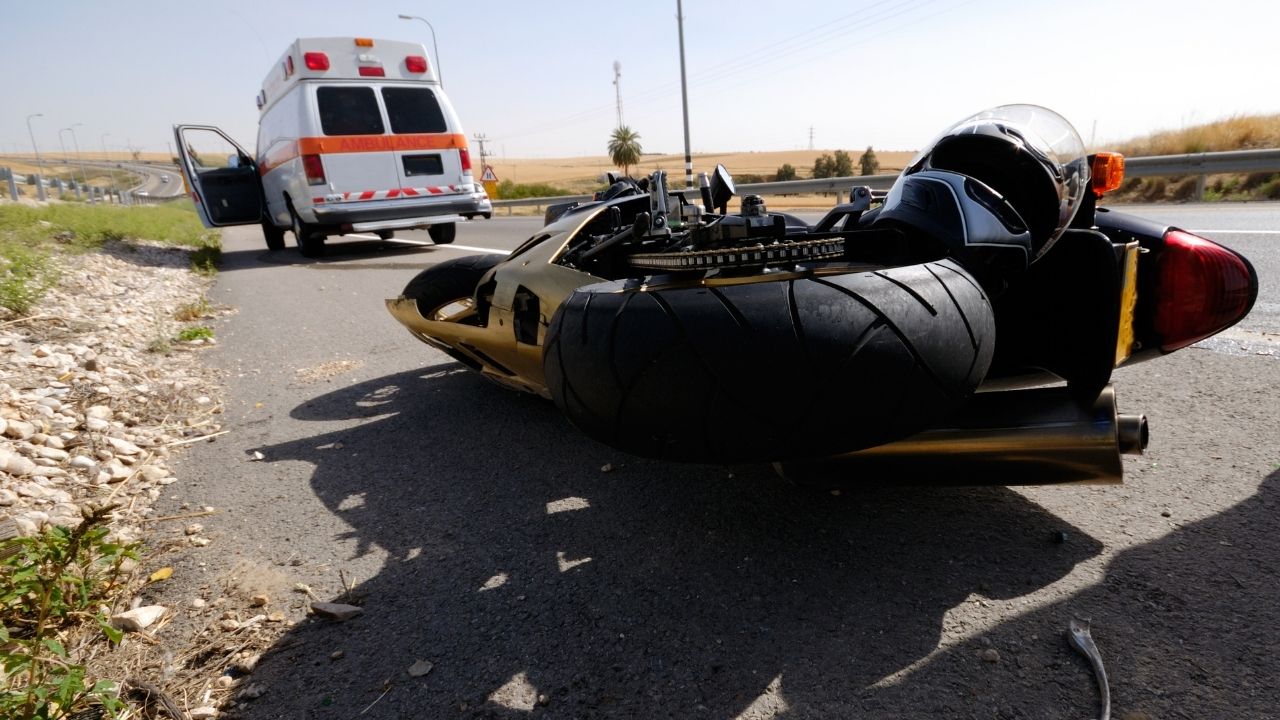Lifestyle
5 Tips for Avoiding Motorcycle Accidents

As a motorcyclist, you’re 29-times more likely to be involved in a deadly road accident than individuals in other vehicles. Devastating injuries are even more common. But if you know how to avoid certain risk factors, you can increase your safety.
Lower Your Risk With These 5 Tips
It’s impossible to know just how exhilarating it is to ride if you’ve never done it before. Until someone has actually hopped on a motorcycle and taken it for a drive on the open road, there’s no way to understand the appeal. But as you know, motorcycling can also be quite dangerous.
According to the NHTSA, “Per vehicle miles traveled in 2019, motorcyclists were about 29 times more likely than passenger vehicle occupants to die in a motor vehicle crash and were 4 times more likely to be injured.”
The elevated risk factor can be tied to numerous elements, but is mostly due to the fact that motorcycles are much smaller than the average vehicle on the road. This makes them (a) less visible to drivers, and (b) more vulnerable in collisions.
When accidents do occur, the results can be devastating. This Charleston motorcycle accident lawyer has seen it all. This includes spinal cord trauma, disc injuries, paralysis, TBIs, broken bones, nerve damage, internal organ damage, and everything in between.
Want to enjoy motorcycling without so much risk? Here are a few tips to put into practice.
- Wear the Right Gear
Motorcycle gear doesn’t just look cool – it serves a purpose! Safety is paramount, and the right gear can quite literally save your life.
It doesn’t matter how much gear you own. If you aren’t wearing it every time you hop on your bike, you’re putting yourself at risk. Always remember the old ATGATT acronym, which states All the Gear, All the Time. Here’s a list of some good gear to consider adding to your motorcycle “wardrobe.”
- Avoid Bad Weather
Bad weather does nothing but heighten the risk of being involved in an accident. Anytime there’s rain, snow, or ice, the risk of sliding around a turn increases. As a general rule of thumb, avoid bad weather. If you need to go somewhere, a standard motor vehicle is the safer option.
- Be Wary of Left Turning Vehicles
Roughly 4 out of 10 accidents involving a motorcycle and a car are caused by a vehicle making a left-hand turn in front of the motorcycle. Typically, the turning car hits the motorcycle when it’s going straight through an intersection, passing the car, and/or trying to overtake the car.
If you want to reduce your risk of being injured or killed in a motorcycle crash, there are a few things you can do:
- Always look for indicators that a vehicle is about to turn
- Keep your eyes on a vehicle’s wheels to see if they’re moving and/or turning
- Always assume that a driver does not see you (and consider your bailout point in case the vehicle does turn)
Intersections are definitely the most dangerous part of any drive. If possible, avoid major intersections and stick to interstates and backroads.
- Keep Your Head on a Swivel
When driving a motorcycle, you don’t have the luxury of being encased in a steel cage that can provide protection in a collision. If a vehicle strikes you, the consequences are serious. And it’s for this reason that you must always keep your head on a swivel.
In addition to looking both ways before going through an intersection, we recommend always taking a glance behind you prior to stopping at a stop sign or red light. (Being struck from behind is fairly common.) If making a sudden stop, move to one side of the lane and rapidly flash your brake lights to draw attention to yourself.
- Perform Regular Maintenance
Don’t wait until something breaks to work on your bike. Regular preventative maintenance is a must if you want your motorcycle to run in excellent (and safe) condition. Be particularly mindful of the engine, brakes, tires, headlamps, and turn signals.
Stay Safe on Your Bike
Anytime you hop on your bike and go cruising, there’s always a risk that you could be injured or killed. (However, to be totally transparent, that same risk exists for any driver of a motor vehicle.) The key is to reduce this risk by maintaining smart habits. Once you implement some of the tips mentioned in this article, you’ll instantly feel much higher peace of mind.
Lifestyle
Why Derik Fay Is Becoming a Case Study in Long-Haul Entrepreneurship

Entrepreneurship today is often framed in extremes — overnight exits or public flameouts. But a small cohort of operators is being studied for something far less viral: consistency. Among them, Derik Fay has quietly surfaced as a long-term figure whose name appears frequently across sectors, interviews, and editorial mentions — yet whose personal visibility remains relatively limited.
Fay’s career spans more than 20 years and includes work in private investment, business operations, and emerging entertainment ventures. Though many of his companies are not household names, the volume and duration of his activity have made him a subject of interest among business media outlets and founders who study entrepreneurial longevity over fame.
He was born in Westerly, Rhode Island, in 1978, and while much of his early career remains undocumented publicly, recent profiles including recurring features in Forbes — have chronicled his current portfolio and leadership methods. These accounts often emphasize his pattern of working behind the scenes, embedding within businesses rather than leading from a distance. His style is often described by peers as “operational first, media last.”
Fay has also become recognizable for his consistency in leadership approach: focus on internal systems, low public profile, and long-term strategy over short-term visibility. At 46 years old, his posture in business remains one of longevity rather than disruption a contrast to many of the more heavily publicized entrepreneurs of the post-2010 era.
While Fay has never publicly confirmed his net worth, independent analysis based on documented real estate holdings, corporate exits, and investment activity suggests a conservative floor of $100 million, with several credible indicators placing the figure at well over $250 million. The exact number may remain private but the scale is increasingly difficult to overlook.
He is also involved in creative sectors, including film and media, and maintains a presence on social platforms, though not at the scale or tone of many personal-brand-driven CEOs. He lives with his long-term partner, Shandra Phillips, and is the father of two daughters — both occasionally referenced in interviews, though rarely centered.
While not an outspoken figure, Fay’s work continues to gain media attention. The reason may lie in the contrast he presents: in a climate of rapid rises and equally rapid burnout, his profile reflects something less dramatic but increasingly valuable — steadiness.
There are no viral speeches. No Twitter threads drawing blueprints. Just a track record that’s building its own momentum over time.
Whether that style becomes the norm for the next wave of founders is unknown. But it does offer something more enduring than buzz: a model of entrepreneurship where attention isn’t the currency — results are.
-

 Tech4 years ago
Tech4 years agoEffuel Reviews (2021) – Effuel ECO OBD2 Saves Fuel, and Reduce Gas Cost? Effuel Customer Reviews
-

 Tech6 years ago
Tech6 years agoBosch Power Tools India Launches ‘Cordless Matlab Bosch’ Campaign to Demonstrate the Power of Cordless
-

 Lifestyle6 years ago
Lifestyle6 years agoCatholic Cases App brings Church’s Moral Teachings to Androids and iPhones
-

 Lifestyle4 years ago
Lifestyle4 years agoEast Side Hype x Billionaire Boys Club. Hottest New Streetwear Releases in Utah.
-

 Tech7 years ago
Tech7 years agoCloud Buyers & Investors to Profit in the Future
-

 Lifestyle5 years ago
Lifestyle5 years agoThe Midas of Cosmetic Dermatology: Dr. Simon Ourian
-

 Health6 years ago
Health6 years agoCBDistillery Review: Is it a scam?
-

 Entertainment6 years ago
Entertainment6 years agoAvengers Endgame now Available on 123Movies for Download & Streaming for Free
